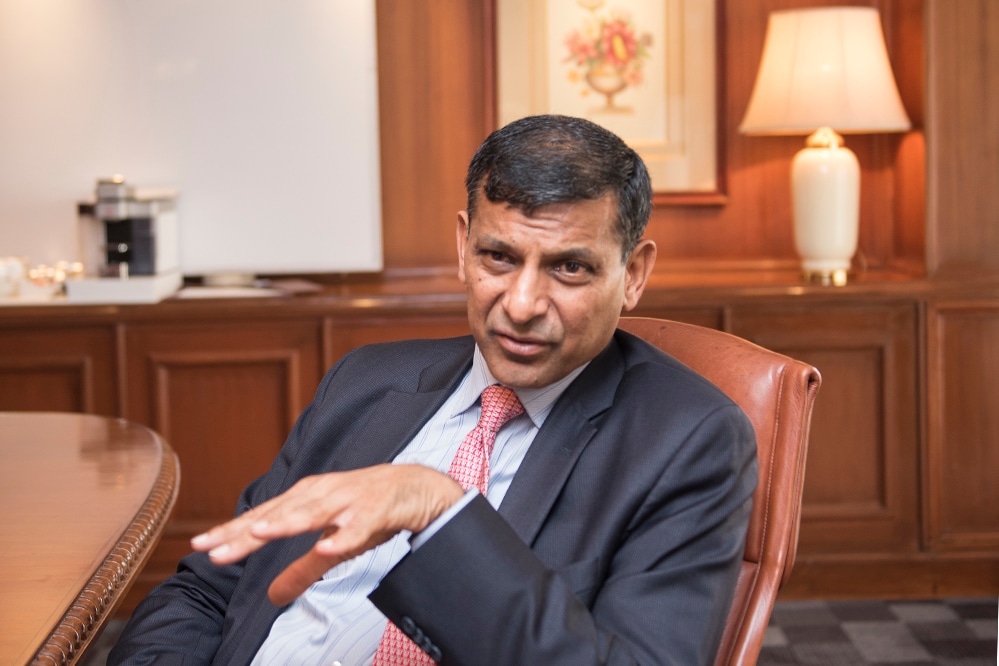
RBI decides when to succumb to govt pressure and when not: Raghuram Rajan
Former RBI governor talks about everything from banks' bad loans to his 'difficult' days as the RBI governor; recollecting the days he would eye forex rates every 10 minutes during its volatile phase; the reluctance of bankers to deal with the problem of bad loans and if an RBI governor needs to match the expectations of the ruling government.

Image: Mexy Xavier
Raghuram Rajan, the former Reserve Bank of India (RBI) governor between 2013 and 2016, is traversing the country to promote his latest book, 'I do what I do', which is a collection of commentaries and essays penned by him in that period. In an exclusive interview with Forbes India, Rajan talks about everything from banks’ bad loans to his ‘difficult’ days as the RBI governor; recollecting the days he would eye forex rates every 10 minutes during its volatile phase; the reluctance of bankers to deal with the problem of bad loans and if an RBI governor needs to match the expectations of the ruling government. Excerpts of the interview:
Q I want you to reflect on your stint as the RBI Governor. What was your worst phase, or a time when you felt challenged or unsure of the efficacy of your policy?
I think the most difficult were the early days when we had just emerged from the ‘taper tantrum’ and we had a bunch of policies that we were monitoring each day to see if they were working.
India’s currency was marked as being part of the “fragile five” [besides Brazil, Turkey, South Africa and Indonesia], one of those likely to be the most impacted once the US Federal Reserve started to normalise and raise interest rates. Rajan, in his latest book writes: "I thought it was time to go all out, I wanted to send the message that India had strong institutions like the RBI that could push forward reform even when Parliament was stalled and international investors should not write India off."
I used to look at the forex rate every 10 minutes and if I saw something worrisome, I would call the foreign exchange desk and talk to them because stability was the most important indicator that the markets had regained confidence. We had to nurse the rupee back to health. I felt almost like a doctor feeling the temperature of a patient every ten minutes. It was probably not worthwhile an investment of time but I was concerned.
There were a number of areas that had to be constantly monitored. We had taken the oil companies off the market [dollar demand from oil companies was taken off the market because of the free fall of the rupee]; we had to look at the flows coming from the Foreign Currency Non-Resident `B’ [the RBI had in 2013 introduced a concessional window for banks whereby they would woo their Non-Resident Indian clients to deposit surplus dollars at a fixed interest rate for the tenor of the deposit. These could be swapped with the RBI for a period of three years]. All these were not easy steps and we had to take a lot of decisions.
Q Who were your go-to men?
We had some very strong people. There was Gurumoorthy Mahalingam, the then executive director [of RBI] and now Sebi (Securities and Exchange Board of India) whole-time member, who was terrific. Also, former deputy governor H R Khan had a very pragmatic attitude and was not ideologically extreme in any direction, so I could always trust his advice.





